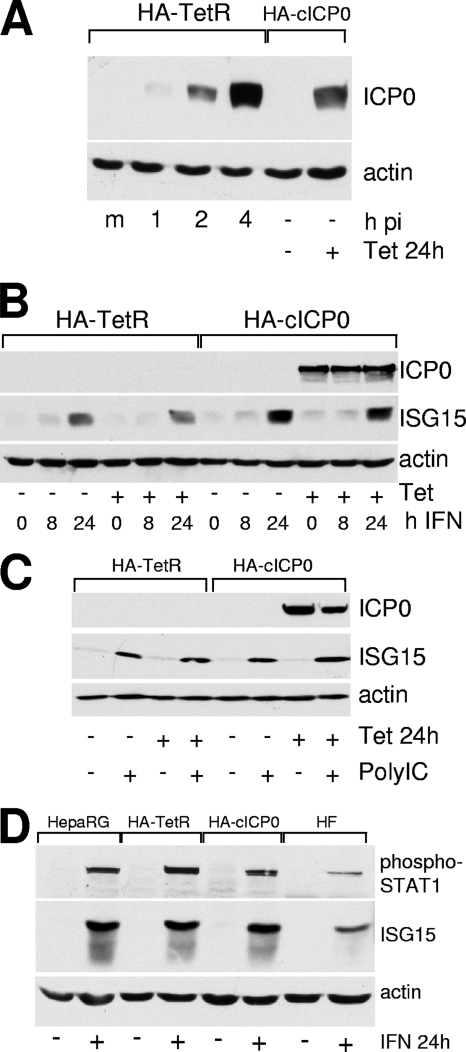FIG. 1.
(A) Comparison of the level of ICP0 expression during the first 4 h of infection of HA-TetR cells with the level expressed after induction of HA-cICP0 cells. HA-TetR cells were infected with wt HSV-1 at an MOI of 1 PFU/cell, and then samples were harvested at 1, 2, and 4 h after infection (m, mock-infected control). These samples were compared for ICP0 expression levels by Western blotting to extracts of HA-cICP0 cells with or without tetracycline treatment (0.1 μg/ml; 24 h). p.i., postinfection. (B) ICP0 does not impede induction of ISGs by IFN. HA-TetR and HA-cICP0 cells were untreated or treated with tetracycline (0.1 μg/ml) for 24 h; cells were subsequently treated with IFN (50 U/ml) for the times indicated in the continuous presence of tetracycline. Samples were harvested and analyzed by Western blotting for ICP0, ISG15, and actin. (C) ICP0 does not impede induction of ISGs by poly(I·C). This experiment was similar to that described in panel B, but poly(I·C) treatment was used to stimulate ISG expression through the IRF-3 pathway. (D) Comparison of induction of phosphorylated STAT1 and ISG15 after treatment of HepaRG, HA-TetR, HA-cICP0, and HFs with IFN-β (100 U/ml) for 24 h. Actin provides the loading control. +, with the indicated treatment; −, no treatment.

